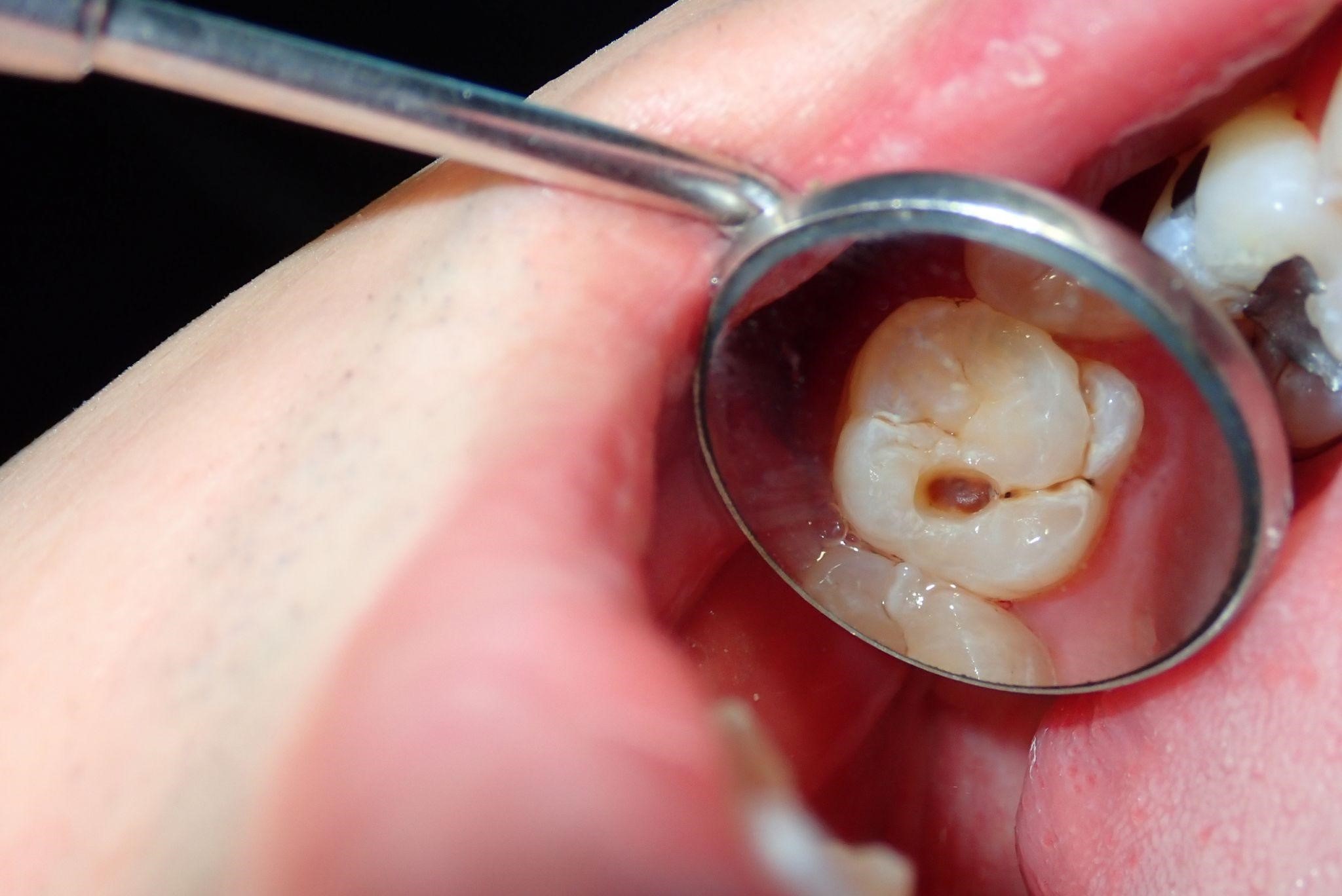When it comes to dental health, prevention is always better than cure. Cavities are one of the most common dental concerns faced worldwide, but what does a cavity actually look like? Recognising the signs early can be crucial in seeking timely dental care, potentially saving you from discomfort and expensive treatments down the track.
In this article, we delve into what a cavity looks like, its stages, and the importance of regular check-ups at your dental clinic.
What Is a Cavity?
A cavity is essentially a hole in a tooth resulting from tooth decay. They begin when harmful acids in the mouth erode the tooth’s hard outer layer, known as enamel. This decay can be caused by various factors, including the buildup of plaque, frequent consumption of sugary foods and beverages, and inadequate oral hygiene practices. If not promptly treated, cavities can lead to more severe dental issues.
Treatments for cavities include fillings, root canal therapy, or even tooth extractions. Timely intervention when a cavity is detected is crucial for maintaining optimal oral health. It’s worth noting that cavities, also known as dental caries, can affect anyone, regardless of age. Regular dental check-ups at dental clinics coupled with good oral hygiene, can effectively prevent cavity formation.
What Do Cavities Look Like?

Cavities manifest in various ways depending on their location, size, and the stage of decay. However, some common visual indicators are:
White spots
In the initial stages, cavities might appear as white spots on the tooth’s surface. These spots indicate demineralisation and are an early sign of tooth decay.
Brown or black stains
As the cavity progresses, these white spots can turn into brown or even black stains. These discoloured areas signify advanced decay and enamel damage.
Visible holes
In more advanced stages, you might actually observe a hole or pit in the tooth. This is a clear sign of a cavity that requires immediate attention.
Location
Cavities often form in areas that are challenging to clean, like between teeth or in the crevices of molars at the back of the mouth.
It’s essential to remember that not all cavities are easily visible, especially when they are just beginning or located between teeth. Dentists have specialised tools and techniques to detect cavities in their earliest stages, ensuring timely intervention and the best outcomes for your oral health. There are, however, other symptoms you can look out for.
Cavity Symptoms
Beyond the visual indicators of cavities, several other symptoms can hint at the presence of tooth decay. Being attuned to these signs can aid in early detection and treatment, helping to maintain the health and integrity of your teeth:
- Tooth sensitivity: One of the most common symptoms is increased sensitivity in the affected tooth. This sensitivity can be felt when consuming hot, cold, sweet, or acidic foods and drinks.
- Toothache: A spontaneous toothache that doesn’t seem to have an obvious cause can be a sign of a cavity. The pain might be sharp, throbbing, or even a constant dull ache.
- Pain when biting down: You may experience discomfort or pain when biting down or chewing food. This happens because the act of biting can put pressure on the cavity, causing pain.
- Bad breath: Persistent bad breath or an unpleasant taste in the mouth can arise from cavities. This is due to the bacteria causing the decay.
- Swelling in the gums: In advanced cases, if the cavity reaches the tooth’s root, it can lead to an abscess or infection in the gum, resulting in swelling or even pus.
- Holes or pits: Feeling a noticeable hole or pit in the tooth when you run your tongue over it, even if it isn’t visible, can be an indicator of a cavity.
It’s imperative to seek professional dental advice if you experience any of these symptoms. Even if they are mild or intermittent, they can be early warning signs of a cavity. Regular check-ups and professional cleanings play a vital role in detecting and treating cavities before they escalate into more severe dental problems.
How to Know if You Have a Cavity
Keeping an eye out for the signs and symptoms listed above can help you suspect a cavity, but knowing for certain requires a definitive evaluation by a dental professional. They might perform tests such as:
Professional dental examination
A dentist will use a small mirror to inspect the surfaces of each tooth. This helps them detect potential cavities and assess the health of your teeth.
Dental X-rays
While a visual examination can identify many cavities, some might be hidden between teeth or beneath the gum line. Dental X-rays provide a comprehensive view of your teeth, highlighting areas of decay that aren’t visible to the naked eye.
Dental probing
Your dentist may use a tool called a probe to check for soft areas in your teeth, which can be indicative of decay. A healthy tooth will typically resist pressure, while a decaying tooth might feel softer.
Laser fluorescence cavity detection aids
Some dental clinics use advanced tools that can detect cavities by measuring the fluorescence within your tooth’s structure. An increase in fluorescence might indicate a cavity.
Fibre optic transillumination
This tool uses light to scan the teeth. Decay can cause changes in the tooth’s structure, affecting how light passes through it. This method helps in detecting cavities by identifying these changes.
It’s essential to trust your dental health with professionals. If you suspect you might have a cavity or if it’s been a while since your last check-up, schedule an appointment with a trusted dental clinic. If you’re in the Stanthorpe, Warwick, or Inglewood areas, contact us today.
Can Cavities Heal on Their Own?
Once your enamel is breached and a cavity forms, a cavity cannot heal on its own. The body cannot regenerate lost enamel or naturally fill in the cavity.
However, the early stage of decay, characterised by demineralisation or the presence of white spots, can potentially be halted or even reversed. This is possible through the process of remineralisation, where minerals like fluoride, calcium, and phosphate can be reintroduced to the tooth’s surface, strengthening the enamel and preventing further decay.
Don’t leave it to chance. If you think you might have a cavity, contact Granite Belt Dental today.













